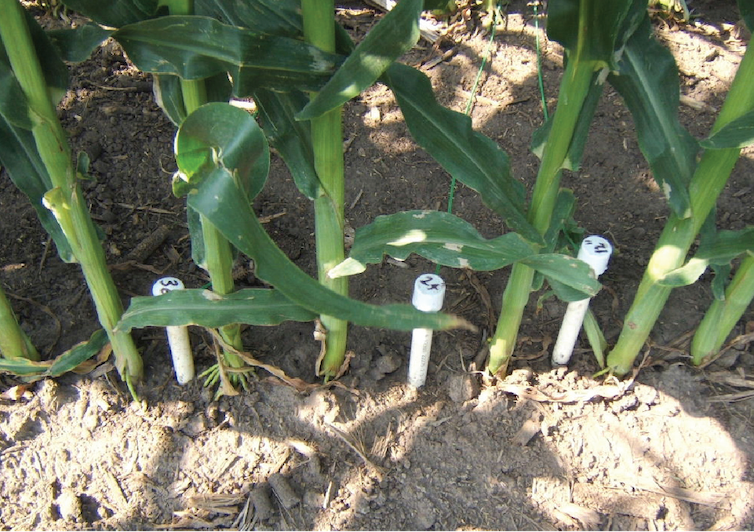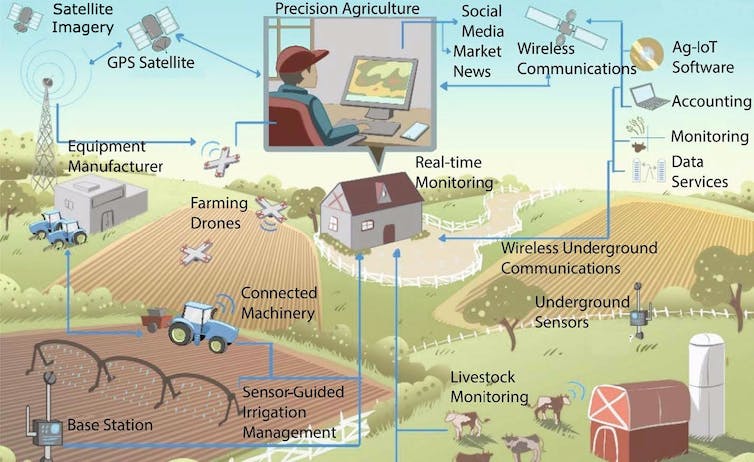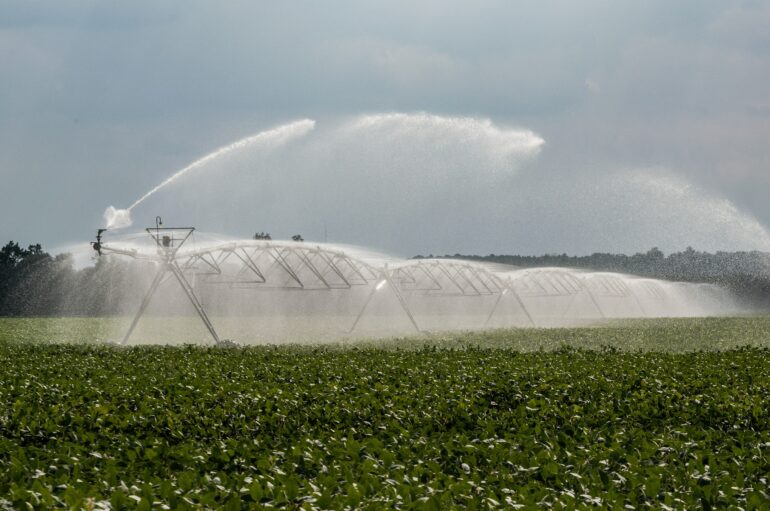Water is the most essential resource for life, for both humans and the crops we consume. Around the world, agriculture accounts for 70% of all freshwater use.
I study computers and information technology in the Purdue Polytechnic Institute and direct Purdue’s Environmental Networking Technology (ENT) Laboratory, where we tackle sustainability and environmental challenges with interdisciplinary research into the Agricultural Internet of Things, or Ag-IoT.
The Internet of Things is a network of objects equipped with sensors so they can receive and transmit data via the internet. Examples include wearable fitness devices, smart home thermostats and self-driving cars.
In agriculture, it involves technologies such as wireless underground communications, subsurface sensing and antennas in soil. These systems help farmers track conditions on their land in real time, and apply water and other inputs such as fertilizer exactly when and where they are needed.

Sensors installed in a corn field.
Abdul Salam, CC BY-ND
In particular, monitoring conditions in the soil has great promise for helping farmers use water more efficiently. Sensors can now be wirelessly integrated into irrigation systems to provide real-time awareness of soil moisture levels. Studies suggest that this strategy can reduce water demand for irrigation by anywhere from 20% to 72% without hampering daily operations on crop fields.
What is the Agricultural Internet of Things?
Even in dry places such as the Middle East and North Africa, farming is possible with efficient water management. But extreme weather events driven by climate change are making that harder. Recurrent droughts in the western U.S. over the past 20 years, along with other disasters like wildfires, have caused billions of dollars in crop losses.
Water experts have measured soil moisture to inform water management and irrigation decisions for decades. Automated technologies have largely replaced hand-held soil moisture tools because it is hard to take manual soil moisture readings in production fields in remote locations.
In the past decade, wireless data harvesting technologies have begun to provide real-time access to soil moisture data, which makes for better water management decisions. These technologies could also have many advanced IoT applications in public safety, urban infrastructure monitoring and food safety.
The Agricultural Internet of Things is a network of radios, antennas and sensors that gather real-time crop and soil information in the field. To facilitate data collection, these sensors and antennas are interconnected wirelessly with farm equipment. The Ag-IoT is a complete framework that can detect conditions on farmland, suggest actions in response and send commands to farm machinery.

